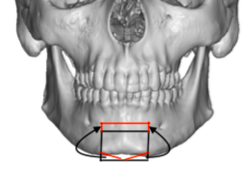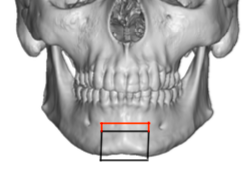Augmentation by an oblique sliding genioplasty is a highly successful procedure as it stretches out the overlying soft tissue chin pad. However when trying to do the same in reverse, or in any form of intraoral bony genioplasty where bony support is lessened (shaving, t-shaped genioplasty, reverse oblique osteotomy) the risk of soft tissue problems appearing afterwards is significant.

This type of inferior sliding genioplasty was uniformly successful in creating a more narrow and round chin in those who has prior broad/square chins. The complications encountered were minor and manageable. (6%) Temporary numbness of the lower lip, mentalis hyperactivity and one surgical revision for bony asymmetry was encountered.
The uniqueness of this type of narrowing genioplasty is that it combines a midline augmentation with a parasymphyseal reduction. The beauty of this concept is that it does not disrupt the bone to soft tissue support ratio, it merely changes the distribution of it. This potentially avoids the most common problem associated with any intraoral-based chin reduction/reshaping procedure…soft tissue excesses/deformities.
The one key anatomic feature that permeates all of the patient results shown is that their broad chin were also flat. That is probably the key factor in determining who is a good candidate for this type of narrowing genioplasty. Even though the vertical chin length increase is minor the patient has to be able to aesthetically handle/tolerate it.
Dr. Barry Eppley
Indianapolis, Indiana





